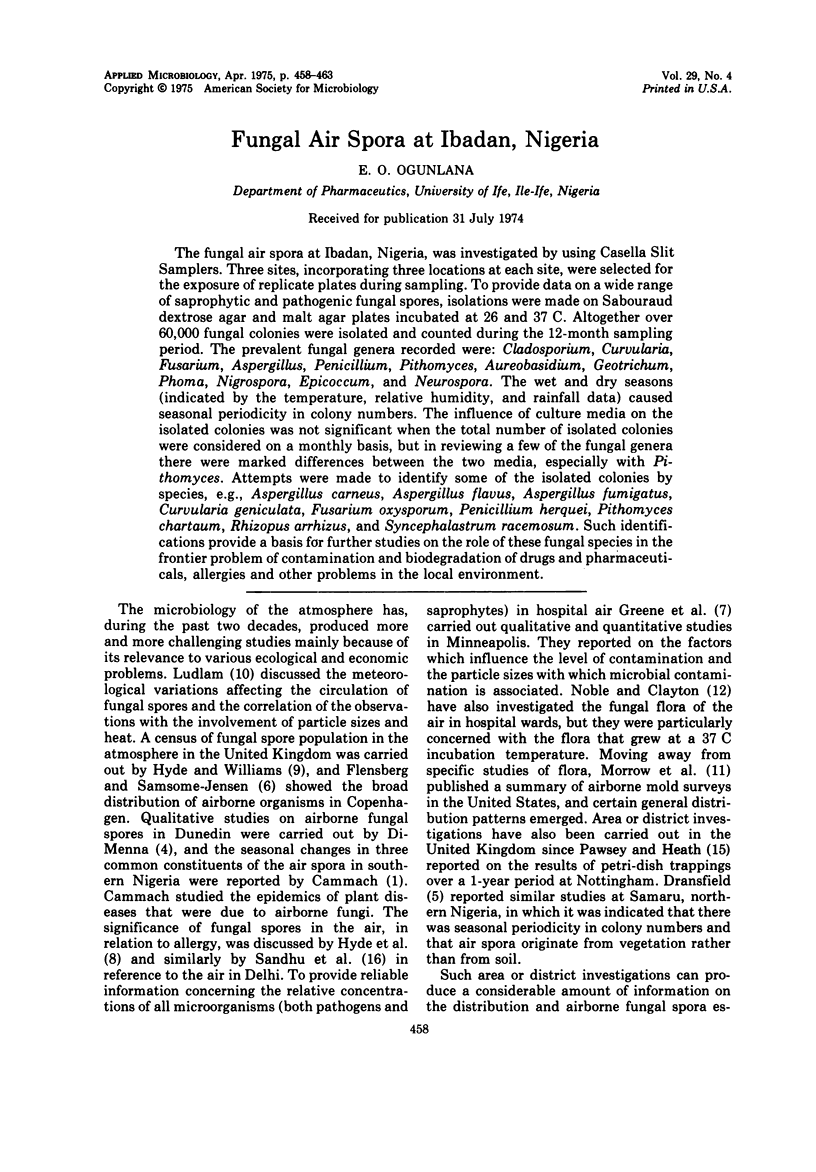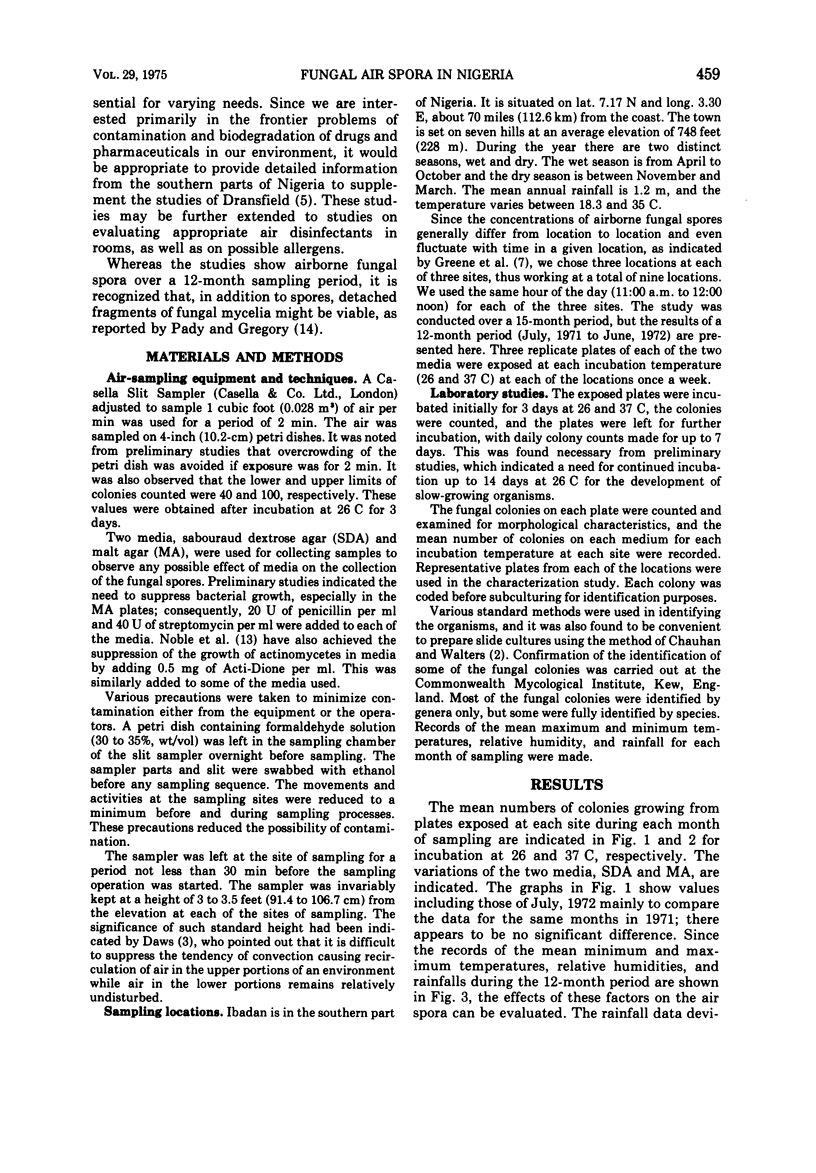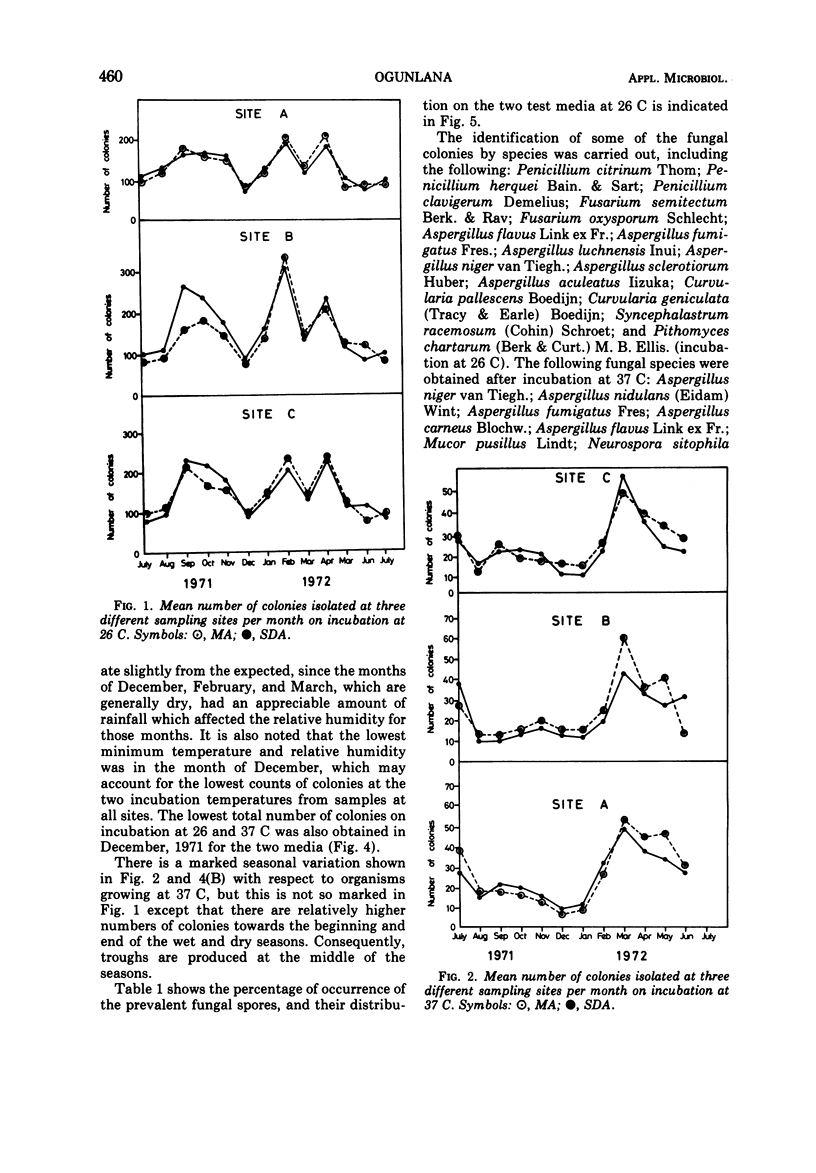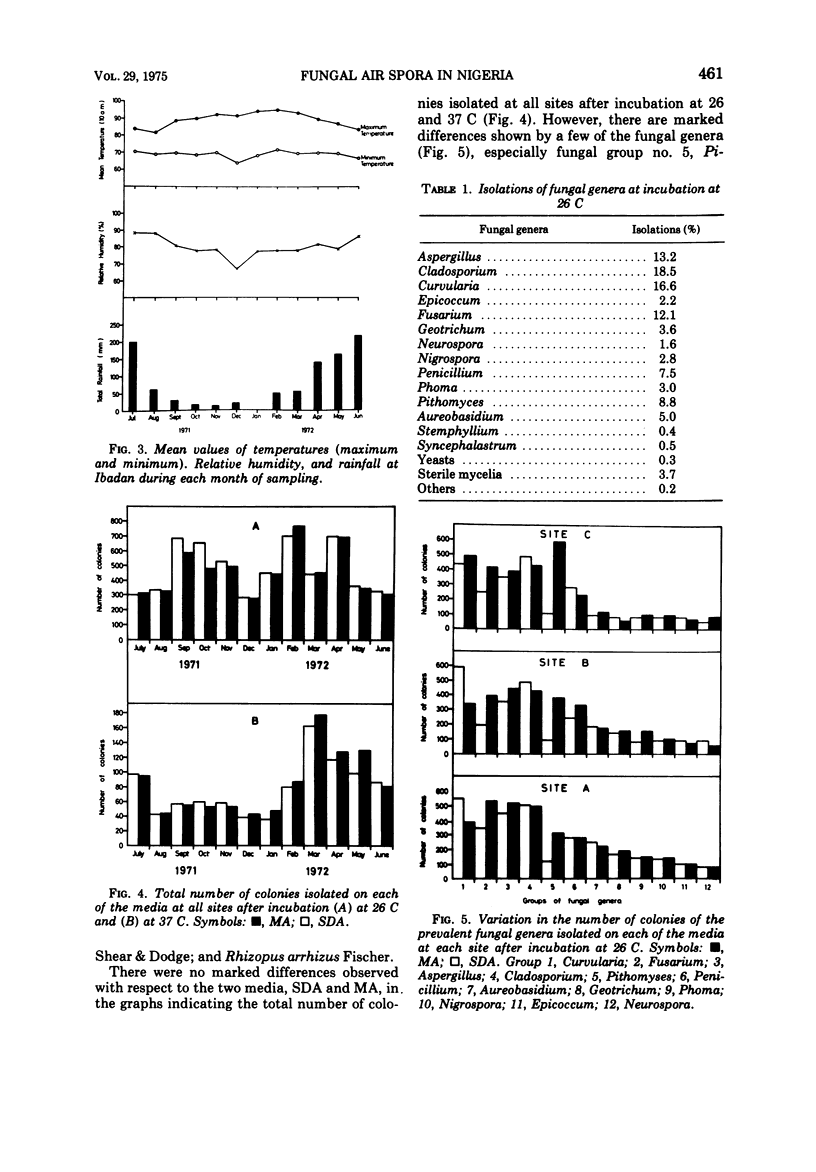Abstract
The fungal air spora at Ibadan, Nigeria, was investigated by using Casella Slit Samplers. Three sites, incorporating three locations at each site, were selected for the exposure of replicate plates during sampling. To provide data on a wide range of saprophytic and pathogenic fungal spores, isolations were made on Sabouraud dextrose agar and malt agar plates incubated at 26 and 37 C. Altogether over 60,000 fungal colonies were isolated and counted during the 12-month sampling period. The prevalent fungal genera recorded were: Cladosporum, Curvularia, Fusarium, Aspergillus, Penicillium, Pithomyces, Aureobasidium, Geotrichum, Phoma, Nigrospora, Epicoccum, and Neurospora. The wet and dry seasons (indicated by the temperature, relative humidity, and rainfall data) caused seasonal periodicity in colony numbers. The influence of culture media on the isolated colonies was not significant when the total number of isolated colonies were considered on a monthly basis, but in reviewing a few of the fungal genera there were marked differences between the two media, especially with Pithomyces. Attempts were made to identify some of the isolated colonies by species, e.g., Aspergillus carneus, Aspergillus flavus, Aspergillus fumigatus, Curvularia geniculata, Fusarium oxysporum, Penicillium herquei, Pithomyces chartaum, Rhizopus arrhizus, and Syncephalastrum racemosum. Such identifications provide a basis for further studies on the role of these fungal species in the frontier problem of contamination and biodegradation of drugs and pharmaceuticals, allergies and other problems in the local environment.
Full text
PDF





Selected References
These references are in PubMed. This may not be the complete list of references from this article.
- CHAUHAN N. M., WALTERS V. Studies on the kinetics of fungicidal action. I. The effect of concentration and time on the viability of Penicillium notatum spores in solutions of phenol. J Pharm Pharmacol. 1961 Aug;13:470–478. doi: 10.1111/j.2042-7158.1961.tb11854.x. [DOI] [PubMed] [Google Scholar]
- GREENE V. W., VESLEY D., BOND R. G., MICHAELSEN G. S. Microbiological contamination of hospital air. I. Quantitative studies. Appl Microbiol. 1962 Nov;10:561–566. doi: 10.1128/am.10.6.561-566.1962. [DOI] [PMC free article] [PubMed] [Google Scholar]
- HYDE H. A., RICHARDS M., WILLIAMS D. A. Allergy to mould spores in Britain. Br Med J. 1956 Apr 21;1(4972):886–890. doi: 10.1136/bmj.1.4972.886. [DOI] [PMC free article] [PubMed] [Google Scholar]
- MORROW M. B., MEYER G. H., PRINCE H. E. A SUMMARY OF AIR-BORNE MOLD SURVEYS. Ann Allergy. 1964 Nov;22:575–587. [PubMed] [Google Scholar]
- NOBLE W. C., CLAYTON Y. M. FUNGI IN THE AIR OF HOSPITAL WARDS. J Gen Microbiol. 1963 Sep;32:397–402. doi: 10.1099/00221287-32-3-397. [DOI] [PubMed] [Google Scholar]
- NOBLE W. C., LIDWELL O. M., KINGSTON D. THE SIZE DISTRIBUTION OF AIRBORNE PARTICLES CARRYING MICRO-ORGANISMS. J Hyg (Lond) 1963 Dec;61:385–391. doi: 10.1017/s0022172400020994. [DOI] [PMC free article] [PubMed] [Google Scholar]
- SANDHU D. K., SHIVPURI D. N., SANDHU R. S. STUDIES ON THE AIR-BORNE FUNGAL SPORES IN DELHI. THEIR ROLE IN RESPIRATORY ALLERGY. Ann Allergy. 1964 Jul;22:374–384. [PubMed] [Google Scholar]


